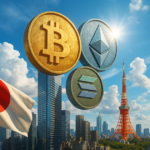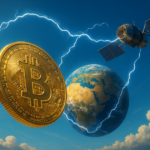The rise of real bitcoin artefacts has sparked a lively discussion among investors, collectors, and crypto lovers. A recent survey done on April 4, 2025, showed a clear split in views regarding these physical manifestations of digital currencies. Some see them as smart investments and precious collectibles; others reject them as speculative fads lacking inherent worth. This continuous debate emphasises the changing function of bitcoin assets and their interaction with conventional investing portfolios.
What Are Physical Cryptocurrency Collectables?
Often produced as coins or tokens, physical cryptocurrency collectibles are real objects that stand for digital currencies including Bitcoin or Ethereum. Usually composed of metals like gold or silver, these things have complex designs. Many have QR codes or integrated private keys under tamper-proof seals letting owners access the related digital money.
Given the distributed and ethereal character of blockchain technology, the idea of physical cryptocurrency may appear odd. For fans and collectors, however, these things are a link between the digital and physical spheres. Their artistry, scarcity, and symbolic link to the larger Bitcoin environment make them much sought for.
The Poll: Split Opinions
A poll run by Numismatic News showed a broad range of views on physical cryptocurrency collectibles:
Proponents say these coins are valuable over time as investments and collectibles. Respondent Michael Barr said, “Having a collectable, tangible cryptocurrency coin in your hands makes perfect sense as long as Bitcoin and other cryptocurrencies have value.”
But critics see them as speculative fads comparable to historical financial bubbles like Holland’s 16th-century tulip mania. “I still believe it’s a fraud, so I would never spend a penny on it,” said one answer.
Some questioned the lack of control and consistency in the manufacture of these coins, saying their worth might reflect the volatility of actual cryptocurrencies.
This split highlights more general doubts about alternative assets including NFTs (non-fungible tokens) and tokenized real-world items, which have also generated controversy in recent years.
Speculation or Investment?
The discussion on tangible cryptocurrency collectibles focuses on their perceived worth:
Supporters view them as creative investments blending financial possibility with artistic mastery. The dual value—derived from both the embedded cryptocurrency and the collectible’s scarcity—makes them attractive to people looking for unusual assets. Early Bitcoin user and BTCC Mint coin designer Bobby Lee compared them to rare Picasso or Van Gogh artworks.
Critics, on the other hand, say that these things are motivated by hype rather than fundamentals and have no inherent value. Their appeal, they warn, might diminish if cryptocurrency enthusiasm declines.
Past Importance
Within the crypto ecosystem, physical cryptocurrency trinkets also have historical relevance. Mike Caldwell’s 2011 launch of the Casascius coin became the first widely known physical Bitcoin. Though production stopped in 2013 because of legal issues, these coins were famous for their creative design and security features. Their scarcity and link to Bitcoin’s early days make them very sought after among collectors today.
Emphasising their relevance as markers of cryptocurrency history, Elias Ahonen, author of The Encyclopaedia of Physical Bitcoins and Crypto-Currencies, called these objects “artefacts of Bitcoin in every technical phase.”
Market Trends in General
Rapid expansion in alternative investments accompanies the discussion over tangible cryptocurrency collectibles. Driven by institutional adoption and developments such distributed finance (DeFi), reports say global interest in blockchain-based assets is skyrocketing. Though they compete with digital collectibles like NFTs, physical crypto coins reflect a niche within this larger trend.
Difficulties in Front
Though they attract collectors, actual cryptocurrency collectibles have major difficulties.
The absence of uniform manufacturing calls into doubt authenticity and worth.
Like with cryptocurrencies themselves, the worth of these collectibles can vary greatly.
Sustainability: Critics say they might not have long-term attraction when compared to other alternative assets including tokenized real-world items.
Final thoughts
The growing popularity of actual cryptocurrency trinkets shows the dynamic crossroads of blockchain technology and conventional banking. For fans, these things are a creative means to mix art, history, and investment possibility. For critics, they are speculative novelties improbable to survive the test of time.
The significance of actual assets linked to digital currency will probably change more as cryptocurrencies keep changing world markets; whether they are lasting investments or transient trends is unknown. At this time, tangible crypto currencies are at the crossroads of tradition and innovation in contemporary finance.









